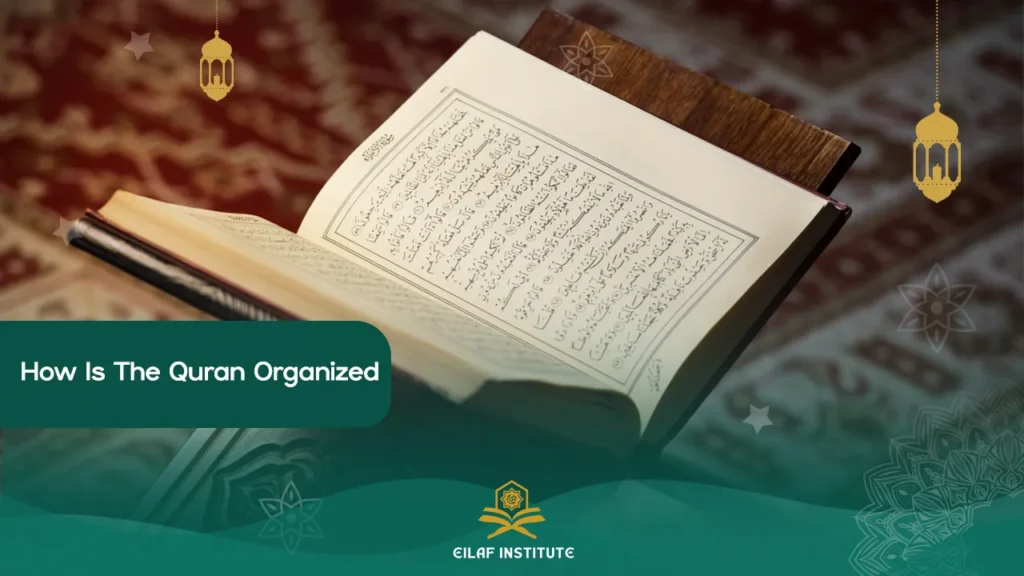The Quran, the holy book of Islam, is a divine scripture that holds profound significance for Muslims worldwide. A common and important question many people have is, How Is The Quran Organized?
Understanding the structure of the quran provides key insights into its coherence and the wisdom behind its arrangement. Delving into the details of How Is The Quran Organized unravels a fascinating journey that reveals the divine wisdom and guidance contained within its pages.
How is the quran organized?
Before delving into How Is The Quran Organized, it’s important to know who arranged the quran in order. The caliph Abu Bakr ordered Zayd Ibn Thabet to compile the Quran into one book to make it easy for Muslims to read from it.
The Quran is organized into chapters. Answering the question of what are chapters called in the quran, they are known as “Surahs,” and each Surah is further divided into verses known as “Ayahs.” The entire Quran is divided into 114 Surahs, varying in length and covering various themes.
The organization of the Quran is not chronological but rather based on the length of the Surahs, with the longest ones generally placed toward the beginning and the shortest ones toward the end.
The way the Quran is organized, or the answer to How Is The Quran Organized, showcases a unique structure that adds depth and significance to its content.
How Is The Quran Divided? Makki and Madani Surahs
The Surahs are classified into two main categories, which is a key part of understanding how the quran is organized:
1- Makki Surahs (Meccan Surahs)
- Revealed during the Meccan period when Prophet Muhammad was in Mecca before the migration to Medina.
- Generally characterized by themes of monotheism, the Day of Judgment, and moral guidance.
- Often shorter in length.
2- Madani Surahs (Medinan Surahs)
- Revealed after the migration of Prophet Muhammad to Medina.
- Tend to address more detailed legal and social matters.
- Generally longer than the Meccan Surahs.
Now you know the basics of How Is The Quran Organized!
How is the quran structured? key points about the organization and structure of the Quran:
1- Surahs are arranged from longest to shortest, except for the opening Surah Al-Fatiha. They are not placed in chronological order according to revelation.
2- Each Surah has a name, usually taken from a key term or theme in the Surah. For example, Surah Al-Fatihah is named after its opening verse/phrase.
3- Verses within each Surah are arranged sequentially and flow continuously. There are no chapter headings or indicators of change.
4- The content of the Surahs covers a wide range of topics including beliefs, laws, morality, history, spirituality, and guidance for believers.
5- Early Surahs tend to be shorter and concentrate on belief in one God. Later Meccan Surahs contain warnings about the Day of Judgment. Medinan Surahs focus more on laws and rulings for the Muslim community.
6- Most English translations of the Quran include the Surah number, name, and total verse count at the start of each new Surah for easy navigation.
7- The quran structure and order of Surahs have remained the same since the time of the Prophet Muhammad and early caliphs who compiled the Quran.
You can also read about: The first surah in the quran: Surat Al-Alaq
How Are the Surahs of the Quran Ordered?
Unlike most books arranged in chronological order, the how are the surahs of the quran ordered is not according to the sequence of revelation.
Instead, the general structure places longer surahs at the beginning and shorter surahs toward the end, though there are exceptions.
This ordering may lead some to ask: how was the order of the quran determined? The answer lies in divine instruction and scholarly consensus. The Prophet Muhammad ﷺ determined the placement of verses within surahs through revelation.
However, the arrangement of surahs themselves is a topic where scholars have expressed varying opinions.
- Majority of scholars agree that the verses’ order within surahs was fixed by the Prophet himself.
- Regarding the order of the surahs, some scholars believe it was based on ijtihad by the Prophet’s companions.
- While others argue that even this arrangement was divinely guided.
Read also about: how to read the holy quran
Quran memorization platforms remotely
In conclusion, exploring how are the chapters of the quran arranged sheds light on the divine wisdom and coherence of this sacred scripture. The answer to How Is The Quran Organized is a testament to its miraculous nature and the profound guidance it offers to humanity.
As we delve into the chapters of the Quran, let us approach its verses with reverence, an open heart, and a sincere desire to seek wisdom and guidance.
May our journey to understand How Is The Quran Organized deepen our understanding, strengthen our connection with Allah, and inspire us to live a life aligned with its teachings.
Ready to elevate your Quranic learning experience? Look no further than Eilaf Academy.
- Unparalleled Learning, Anywhere, anytime:
- Explore a world-class platform designed for seamless Quranic education.
- Receive personalized guidance from our seasoned instructors.
- Embrace the flexibility of remote learning with Eilaf’s innovative approach.
Know how to learn to read quran online now!
Source:

